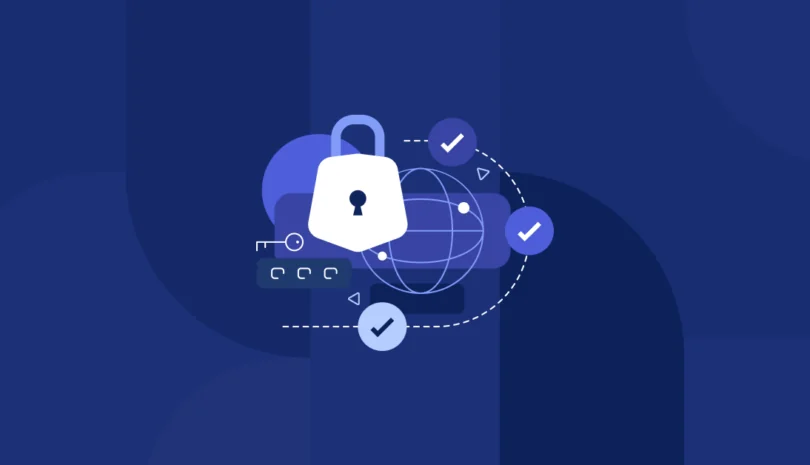In today’s evolving threat landscape, even a single unpatched vulnerability can leave financial institutions exposed to serious risk. The Digital Operational Resilience Act (DORA) emphasizes the need for a structured and proactive approach to identifying, assessing, and mitigating ICT vulnerabilities across systems and third-party providers.
Effective vulnerability management is not just a security best practice, it’s now a regulatory expectation. Under DORA, organizations must maintain a continuous process for monitoring their digital infrastructure, prioritizing vulnerabilities based on risk, and swiftly remediating them to prevent disruption. This includes regular vulnerability assessments, timely patch management, and robust coordination between internal teams and external vendors.
Financial entities operating in the EU, or working with EU-based firms, must be able to demonstrate that they can identify weaknesses before they are exploited, in line with DORA’s strict requirements. Implementing automated scanning tools, maintaining up-to-date asset inventories, and embedding vulnerability management into incident response planning are critical steps toward achieving compliance and building lasting operational resilience.
Key DORA Compliance Obligations
DORA sets clear expectations for how financial entities must manage ICT vulnerabilities to ensure operational resilience. At the core of these obligations is a commitment to continuous vigilance and accountability.
Organizations must conduct regular vulnerability assessments across all ICT assets, internal systems, external services, and third-party environments alike. This helps maintain visibility into potential weaknesses and informs risk-based prioritization. Once vulnerabilities are identified, timely patch management and remediation are essential. Delays in addressing known issues can lead to regulatory scrutiny and, more critically, security incidents.
Continuous monitoring is another cornerstone of DORA. Institutions are expected to stay ahead of emerging threats by actively tracking system behavior and threat intelligence sources. This ongoing awareness allows for faster response to newly discovered vulnerabilities or exploit techniques.
Finally, DORA emphasizes transparency and traceability. Documenting vulnerability management processes and maintaining detailed records of assessments, remediation timelines, and communication with stakeholders is not optional, it’s a regulatory requirement. This documentation ensures that institutions can demonstrate compliance during audits or supervisory reviews.
Together, these practices help financial entities build resilience, meet DORA standards, and strengthen their overall cybersecurity posture.
The Role of Vulnerability Management in Operational Resilience
Vulnerability management plays a central role in ensuring operational resilience for financial institutions. By systematically identifying and addressing weaknesses in ICT systems, organizations can significantly reduce risk and prevent the exploitation of flaws that could disrupt critical services.
From a regulatory standpoint, effective vulnerability management supports compliance with DORA, which requires proactive measures to manage ICT risks. Financial entities must demonstrate that they can identify, assess, and remediate vulnerabilities in a timely and organized manner, across both internal systems and outsourced environments.
Beyond compliance, strong vulnerability management practices contribute directly to incident prevention and response. By resolving security gaps before they can be exploited, organizations limit the chances of cyberattacks and reduce the impact if an incident does occur. Integrating these processes with broader incident response plans ensures faster recovery and minimal disruption.
Lastly, third-party risk mitigation is a key dimension of DORA and vulnerability management. Organizations must ensure that their vendors and service providers maintain secure practices and are subject to the same level of scrutiny and remediation protocols.
In short, vulnerability management is not just a technical task, it’s a strategic pillar of digital resilience in the financial sector.
Step-by-Step Vulnerability Management Process for DORA Compliance
To meet DORA’s rigorous standards, financial institutions must implement a structured vulnerability management process that’s proactive, repeatable, and well-documented. Each step plays a crucial role in reducing ICT risk and ensuring operational resilience. Below, we break down the key stages of an effective vulnerability management lifecycle aligned with DORA compliance.
Step 1: Establish a Governance Framework
Start by defining clear roles and responsibilities for vulnerability management across your organization. Assign accountability for identifying, assessing, and remediating vulnerabilities. Develop policies and procedures that align with DORA’s ICT risk management requirements, ensuring they are approved by senior leadership and integrated into broader risk governance. This framework should also include escalation paths, timelines, and oversight mechanisms. A well-defined governance structure ensures consistency, supports regulatory compliance, and creates a strong foundation for managing vulnerabilities effectively across internal systems and third-party environments.
Step 2: Implement Asset Discovery and Classification
Effective vulnerability management begins with full visibility. Identify all ICT assets, including hardware, software, cloud services, and third-party connections. Classify these assets by their business criticality and exposure to risk, this helps prioritize protection efforts and supports risk-based decision-making. Maintain a centralized and dynamic asset inventory that updates in real-time as systems evolve. Understanding what you have, where it resides, and how it’s connected is essential for assessing vulnerabilities and meeting DORA’s requirements for comprehensive ICT risk coverage.
Step 3: Perform Regular Vulnerability Assessments
Conduct automated vulnerability scans and manual assessments on a regular basis to identify security gaps. Scans should cover internal systems, external-facing assets, and cloud environments. Include third-party vendors and service providers in the assessment process, as DORA requires full visibility into external risks. Use threat intelligence and exploit data to enhance detection accuracy. Regular assessments ensure vulnerabilities are caught early and allow institutions to stay ahead of potential threats while demonstrating ongoing compliance with DORA’s operational resilience standards.
Step 4: Prioritize and Remediate Vulnerabilities
Once vulnerabilities are identified, prioritize them based on potential business impact, exploitability, and asset criticality. Focus remediation efforts on high-severity and high-risk vulnerabilities first. Develop and enforce patching schedules that reflect the urgency of each issue, and track remediation progress across teams and systems. Coordination between IT, security, and risk management teams is essential to avoid delays. This risk-based approach aligns with DORA’s requirement for proactive ICT risk management and ensures critical weaknesses are addressed before they can be exploited.
Step 5: Monitor and Validate Effectiveness
After remediation, continuously monitor systems to ensure vulnerabilities are effectively resolved and new ones are promptly detected. Use key performance indicators (KPIs) and key risk indicators (KRIs) to measure the effectiveness of your vulnerability management program. Conduct periodic penetration tests and scenario-based exercises to validate defenses and identify gaps in real-world conditions. Monitoring and validation not only support DORA compliance but also provide valuable insight into your institution’s overall cyber resilience and readiness to respond to evolving threats.
Step 6: Maintain Documentation and Ensure Continuous Improvement
Maintain comprehensive records of all vulnerability management activities, including assessments, remediation actions, and communications. DORA requires clear documentation to support audits and demonstrate accountability. Establish a feedback loop to regularly review the effectiveness of policies, tools, and processes. Use lessons learned from incidents, audits, and testing to drive ongoing improvements. Continuous refinement of your program ensures it remains aligned with both regulatory expectations and the dynamic threat landscape, strengthening your organization’s long-term operational resilience.
Tools and Technologies to Support DORA-Compliant Vulnerability Management
Achieving DORA compliance requires more than policies, it demands the right tools to enable continuous, risk-based vulnerability management. Several technologies play a critical role in meeting regulatory expectations and strengthening operational resilience.
- Vulnerability scanning tools help identify weaknesses across internal systems, cloud environments, and external-facing assets. These tools should be used regularly and support automated scans with detailed reporting.
- Patch management solutions streamline the remediation process, ensuring timely deployment of updates based on risk severity and asset criticality.
- Threat intelligence platforms provide real-time insights into emerging vulnerabilities and exploit trends. Integrating this data enhances prioritization and improves response times.
- Security Information and Event Management (SIEM) systems offer centralized monitoring and analysis of security events. They help detect anomalies, support incident response, and provide documentation for audits.
- Third-party risk platforms, such as Panorays, extend visibility into vendors’ security postures. These platforms enable assessments, monitoring, and communication with external providers, critical for DORA’s focus on ICT supply chain risk.
Together, these technologies form the foundation of an effective, DORA-aligned vulnerability management program, one that proactively protects assets, supports compliance, and improves resilience across the digital ecosystem.
Best Practices for Vulnerability Management Under DORA
To meet DORA’s expectations and build lasting operational resilience, financial institutions must implement best practices that go beyond basic vulnerability scanning. These practices ensure a more strategic, efficient, and compliant approach to ICT risk management.
- Adopt a risk-based approach by prioritizing vulnerabilities based on their potential business impact, exploitability, and the criticality of affected assets. This ensures that the most pressing threats are addressed first.
- Automate where possible to increase speed, accuracy, and consistency. Automating scans, patch deployment, and reporting helps streamline compliance and reduce human error.
- Regularly update asset inventories to maintain full visibility over all ICT systems and dependencies. Accurate inventories are the foundation of effective vulnerability management.
- Engage in continuous threat monitoring using real-time intelligence feeds and anomaly detection to stay ahead of emerging vulnerabilities and evolving attack methods.
- Test remediation effectiveness through validation processes such as penetration testing, vulnerability re-scans, and red team exercises. This ensures patches and fixes are properly applied.
- Integrate with third-party risk management programs to extend oversight beyond your own infrastructure. Assess vendor vulnerabilities and ensure their remediation practices align with your standards.
These practices collectively strengthen both regulatory alignment and cyber resilience across your ecosystem.
Effective Vulnerability Management Under DORA
A proactive, risk-based vulnerability management strategy is crucial for financial institutions aiming to meet DORA compliance and protect their ICT systems from evolving cyber threats. DORA mandates continuous identification, assessment, and remediation of vulnerabilities to strengthen operational resilience and minimize the risk of disruptions.
To build an effective program, organizations should begin by thoroughly assessing their existing vulnerability management practices. This includes evaluating current tools, processes, and governance frameworks to identify gaps relative to DORA’s regulatory requirements. Aligning your program with these standards ensures that all ICT assets, internal and third-party, are systematically covered.
Continuous vulnerability identification is essential. Automated scanning, manual assessments, and integration of third-party risk data help maintain a real-time understanding of weaknesses. Assessments should be risk-based, prioritizing vulnerabilities that pose the greatest threat to critical operations.
Remediation efforts must be timely and coordinated, supported by patch management solutions and clear accountability. Regular validation of fixes through testing strengthens confidence in the program’s effectiveness.
By adopting this comprehensive, risk-focused approach, organizations not only meet DORA’s expectations but also enhance their overall cyber resilience, ensuring business continuity in a rapidly changing threat landscape.
Book a personalized demo today and see how Panorays can transform your third-party risk management into a streamlined, proactive process that fits seamlessly into your ITAM and DORA compliance strategies.
Vulnerability Management Under DORA FAQs
-
DORA requires regular and continuous vulnerability assessments. While the exact frequency depends on the institution’s risk profile and criticality of assets, assessments should be performed at least quarterly, with more frequent scans for high-risk systems or after significant changes. Continuous monitoring is also encouraged to promptly detect emerging threats.
-
Organizations should prioritize vulnerabilities based on risk, those that pose the greatest threat to critical ICT systems and operational resilience. This includes vulnerabilities with known exploits, high severity ratings, and those affecting key business functions. Risk-based prioritization ensures efficient allocation of resources to mitigate the most impactful risks first.
-
DORA places significant emphasis on third-party risk management. Financial entities must ensure that their vendors and ICT service providers maintain robust vulnerability management practices. This includes assessing vendor vulnerabilities, requiring timely remediation, and maintaining continuous oversight, as third-party weaknesses can directly affect the institution’s operational resilience.



